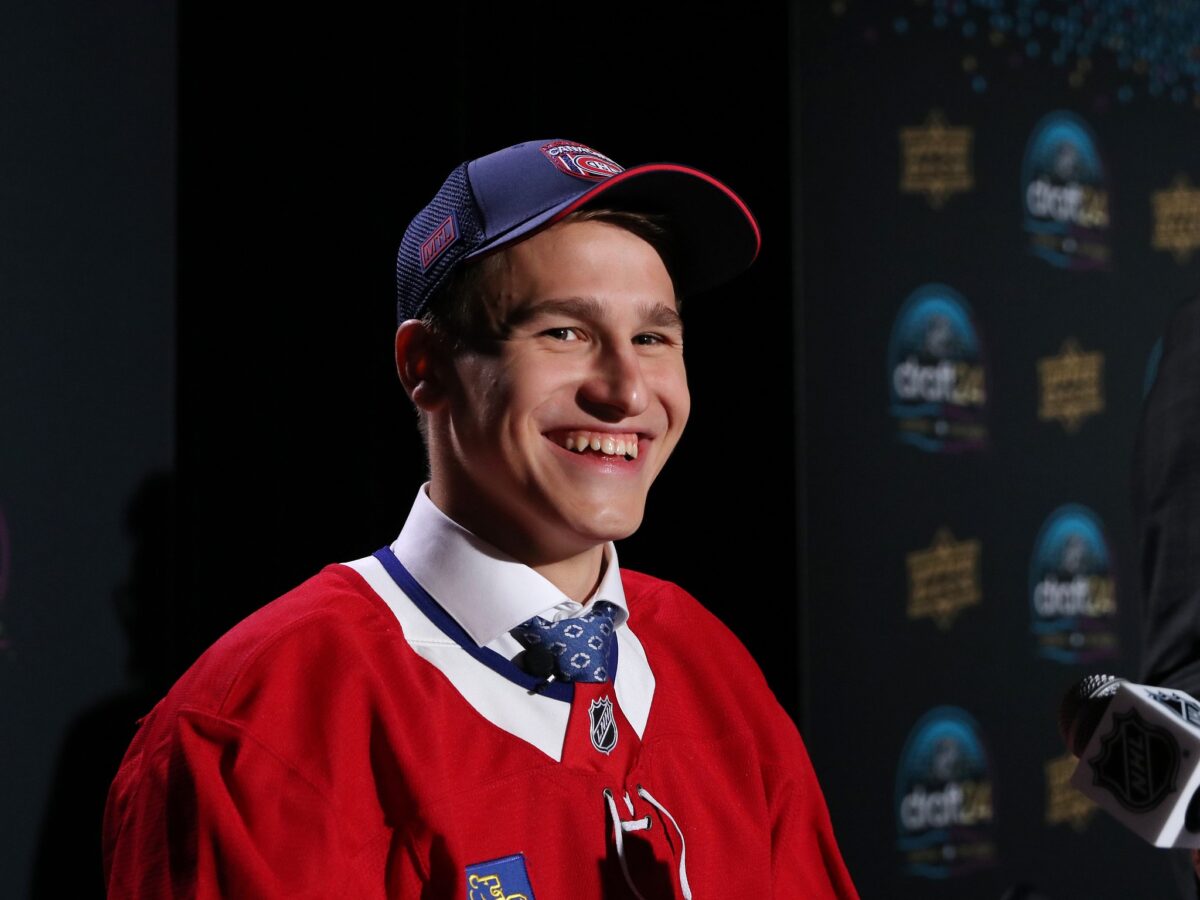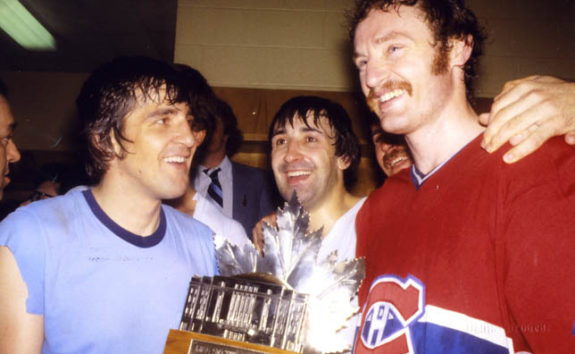There is no doubt that the Montreal Canadiens and their fans were ecstatic for the addition of 2024 fifth-overall pick Ivan Demidov. He somehow slid to the Canadiens and the excitement fans feel is palpable. Is it warranted? Yes, Demidov is seen as a future offensive star, which is exactly what Montreal has been missing in their system. With his addition, the rebuild is seen as nearly complete.

The “Russian Factor” seems to have a slightly different meaning in Montreal. Yes, it does still allude to the difficulties NHL teams face at getting Russian prospects over to North America, but for Canadiens’ fans, it has an additional meaning. It means exciting hockey. That answers the why, because it’s no secret, Montreal loves players with flair, see PK Subban. But what gave birth to this love affair, and who has carried that torch over the years?
Canadiens’ Russian Big Three
Since the turn of the century, there has been a handful of Russian-born players to wear the Canadiens uniform. While some have been good, only a handful have been truly memorable.
Andrei Markov
Andrei Markov is an outlier when talking about flashy Russian skill players. While he is Russian, he never played with that reckless abandon and desire to push for offence that Russian players are known for. Instead, he was an incredible two-way defender who was able to quarterback a power play with aplomb. He was smooth and poised under pressure. He had incredible vision and could make long-distance passes through traffic quickly and accurately, leaving teammates with easy tap-in goals.
Related: Evolution of Canadiens Development Model
He suffered not one, but two significant knee injuries which forced him to miss nearly two entire seasons of play. While these injuries did affect his skating, which was once seen as smooth, effortless and one of the best strides in the game at that time, it did not cause him to have a sharp decline in effectiveness as some anticipated at the time. What made him special was his hockey mind. He was able to control a game because of his ability to read, react and anticipate what everyone on the ice was doing. In the end, he provided Canadiens fans with 990 games of excellence, finishing his NHL career, some would say too early in 2017, with 119 goals and 572 points as the highest-scoring Russian-born player in team history and even has fans talking about if he has done enough to have his number retired by the club.
Ilya Kovalchuk
Ilya Kovalchuk is one of the more recent fan favourite Russians for Canadiens fans. He retired from the NHL in 2013 just three years after signing a 15-year deal with the New Jersey Devils. He returned to Russia to play in the Kontinental Hockey League (KHL) for more money than he would have earned under the entire Devils’ contract. Yet, four years after that, his KHL contract came to an end and he was looking to return to the NHL to prove something for himself, that he could still play among the best players on the planet, signing with the Los Angeles Kings, where he was never able to find a real fit.
Once Kovalchuk was bought out, the Canadiens swooped in and signed him to a one-year deal paying him the league minimum. Once he arrived, maybe it was the poutine or the European fell to the city, or the rabid fanbase, whatever it was, something clicked for Ilya, and he played with the passion that the fans in Montreal love to watch. Scoring six goals and 13 points in 22 games isn’t the dominating offensive performance of his youth with the Atlanta Thrashers, but his clutch scoring, two of his six goals were overtime winners, showed he belonged. However, because Montreal was already eliminated from playoff contention that season, he was traded to the Washington Capitals. His time in a Canadiens uniform was short but his tenure is still remembered fondly by the fanbase.
Alex Kovalev
The mercurial Alexei Kovalev spent five seasons in Montreal after being acquired in a trade from the New York Rangers in what may be one of the most victorious one-sided trades in Canadiens history. His arrival gave the fans his signature style of play, something they desperately needed at the time. While it was at times frustrating for coaches, it was simultaneously a joy for fans to watch. He provided the only instance of a Canadiens player scoring at a point-per-game pace in the 21st century, finishing with 84 points in the 2007-08 season. He didn’t just give fans magical offensive plays, he was also able to play with an edge. He authored one of the most-watched clips in modern Canadiens history as he orchestrated a hit on Darcy Tucker of the Toronto Maple Leafs as a warning to not try to take liberties with him. The message seemed to have been received.
Kovalev sits second, behind only Andrei Markov, for points by a Russian in a Canadiens uniform. He also sits fifth in the NHL all-time among Russian-born players.
New Year’s Eve Red Army Game
What is likely to have launched the love affair with Russian players, but also the flair and skill they display on the ice, is the Red Army New Year’s Eve Game. It was during the height of the Cold War, and the Soviets (USSR) were on a mission to prove they, and not Canada were the true hockey superpower. From 1956 to 1975, they won four of five Olympic gold medals (winning a bronze in the other), and World Championship gold medals in 11 of the 12 years (silver was the other medal) leading up to the 1975 exhibition game in Montreal.
This was in an era when NHL players were not allowed to participate in the Olympics, and thus, the Summit Series was born. But the USSR wanted a show of strength against the best NHL club. So, just a few years after the epic 1972 Summit Series, Montreal was selected to play in one of these exhibition games, and it has since become one of the greatest single hockey games to have ever been played.
It was a battle between two great teams who played two different styles. Usually, exhibition games have a few token players and some uninspired play, but due to the social and political climate at the time, patriotism may have come into play as both teams iced their best rosters, and played as if it was a championship final. The game featured Ken Dryden in net, and the “big three” on the blue line were in the prime of their career — Larry Robinson, Guy Lapointe, and Serge Savard. The offence was led by Guy Lafleur, Bob Gainey, Steve Shutt, and Jacques Lemaire. And they all ended up being key pieces in the dynasty of the 1970s that won four consecutive Stanley Cups.

This game was mere months before the Canadiens won the first of those Cups. It was a game that, in hindsight, was a signal to the world that Montreal was on the cusp of greatness. On the other bench was the Soviet Red Army, the perennial champions of the Soviet league (32 titles) and its core group was the backbone of the Soviet international team with Vladislav Tretiak in goal. Up front were Valeri Kharlamov, Boris Mikhailov, Vladimir Petrov, Viktor Vikulov, Vladimir Lutchenko and Alexander Gusev. And to be certain that they iced their best possible club squad, the Red Army team added two stars in Alexander Maltsev and Valeri Vasiliev. Looking back, this was the best possible club-versus-club skirmish that anyone could ever have hoped to witness.
The fast pace, the clean play, the fierce competitiveness, and the pure skill put on display became the blueprint for the Canadiens, and copied by the Edmonton Oilers dynasty of the 1980s. As the game wore on, Montreal proved to be the better team. But Tretiak’s brilliance made all of the difference.
Montreal outshot the Soviets 38-13 yet; the score was 3-3. The shot totals don’t tell the full story as Montreal played a more NHL-typical brand of hockey where shot volume is the norm, whereas the USSR stuck to their more controlled, puck possession style. Low-percentage shots were seen as a giveaway in the Soviet system. Instead, they would hold possession for as long as possible, circling in and out of the offensive zone in the hopes of creating seams in the defensive coverage. Once they had one, and one that allowed a clean shot on goal in a high percentage area, for example, the low slot, only then would a Russian forward dare to take a shot. That is why there were three goals scored on only 13 shots.
At the end of the night, the Canadiens came off the ice with a sense, not of being part of a historic event but rather that they were on the cusp of greatness. This game can be seen as the moment the players and the fans knew they were ready to witness a team that would redefine NHL hockey.
Only a few years later, once it was allowed, Montreal drafted Tretiak, who, oddly enough was deemed eligible for the draft at the ripe old age of 31 because the NHL had ruled that all Europeans, regardless of age, would have to enter the league through the entry draft, rather than as unrestricted free agents. In 1984, then-Canadiens general manager (GM) Serge Savard tried to negotiate his transfer to the NHL but ultimately failed as the Soviets wouldn’t let him go. Later that same offseason, Savard selected a local kid named Patrick Roy. How different would the Canadiens’ history have been if Tretiak was the goaltender in the Habs’ net in the 1986 season and playoffs instead of the young upstart who began his Hall of Fame career by winning a Stanley Cup as a rookie?
In the end, the fact someone is Russian or Canadian or even from the province of Quebec is not important. What is important is if that player can play at a high tempo, with high-end skill. If they can do that, and create offence, but most of all, create highlight reel-worthy plays on a regular basis, fans will adore them in Montreal. In the case of Russian-trained players, the highly skilled ones play the style that fans in Montreal truly adore, and that is the “Russian Factor” that matters most to Canadiens fans.
